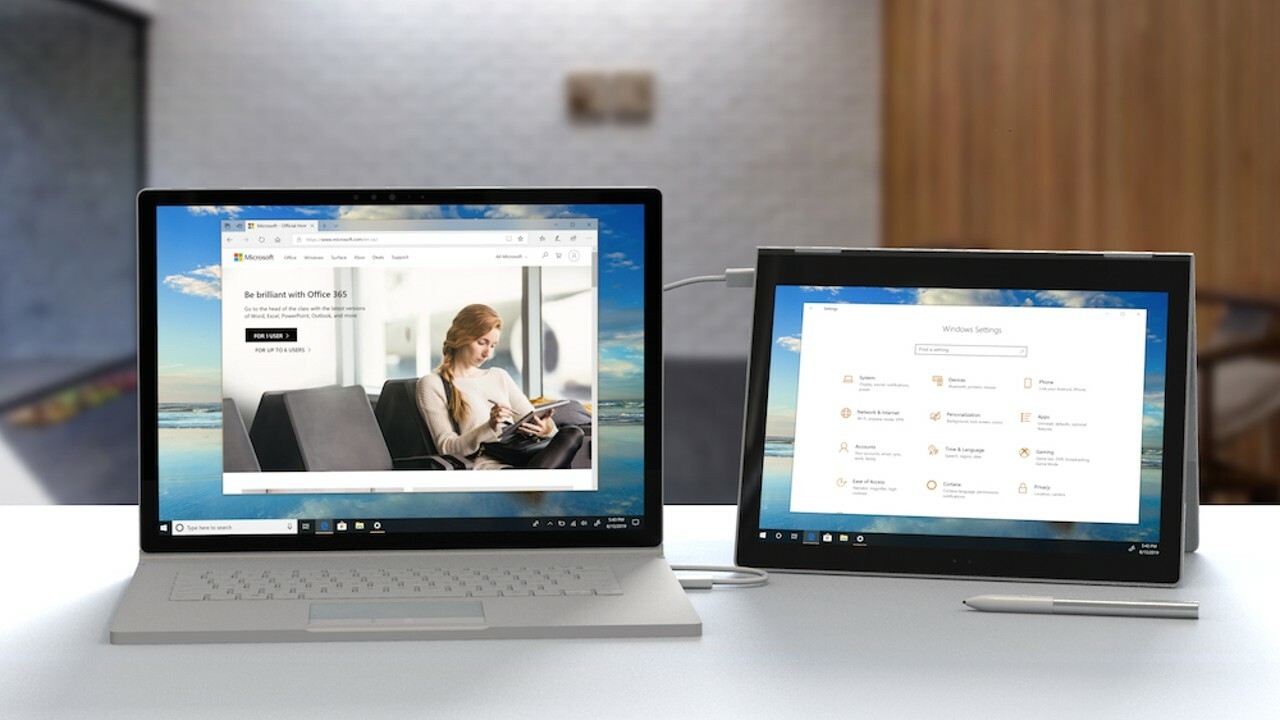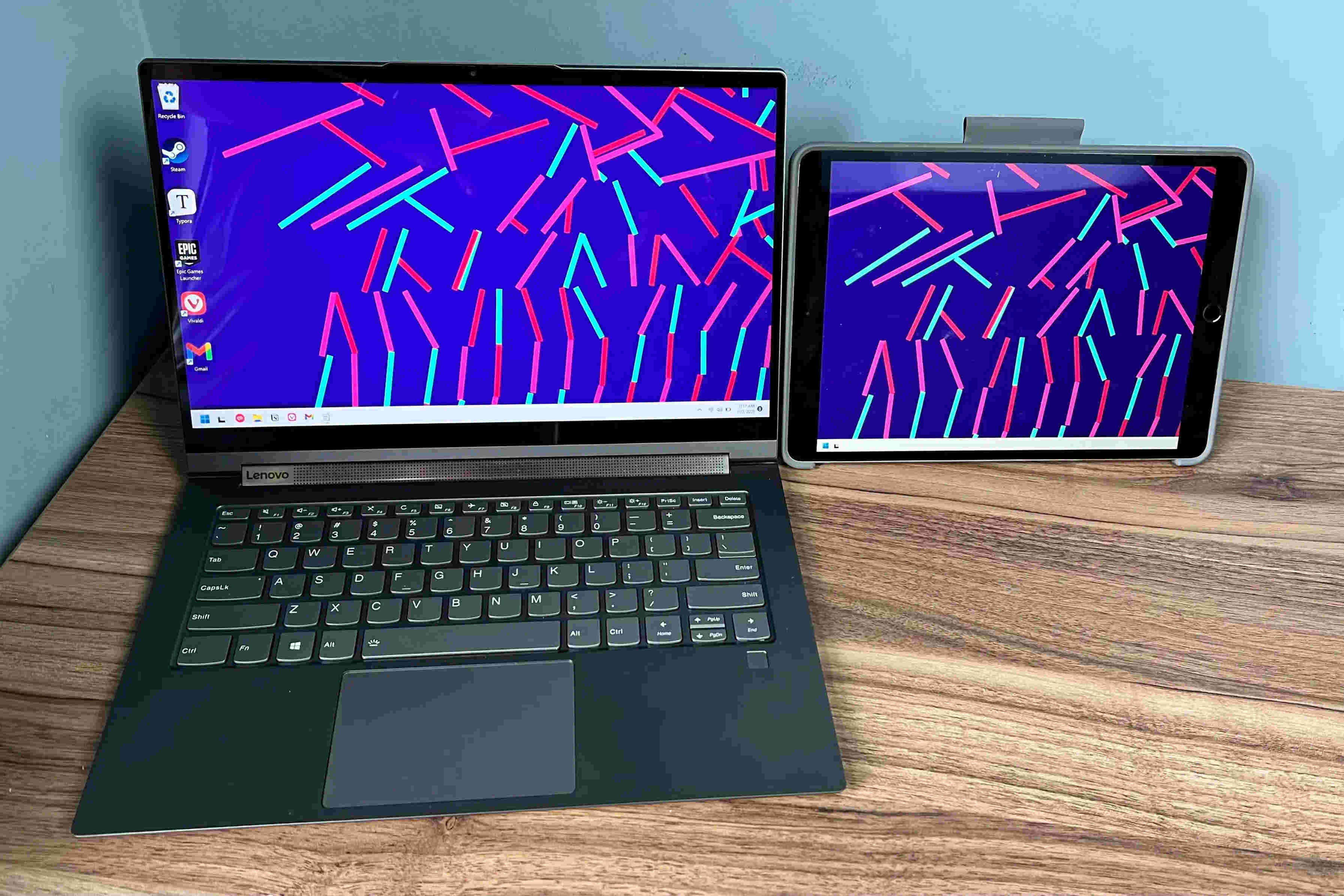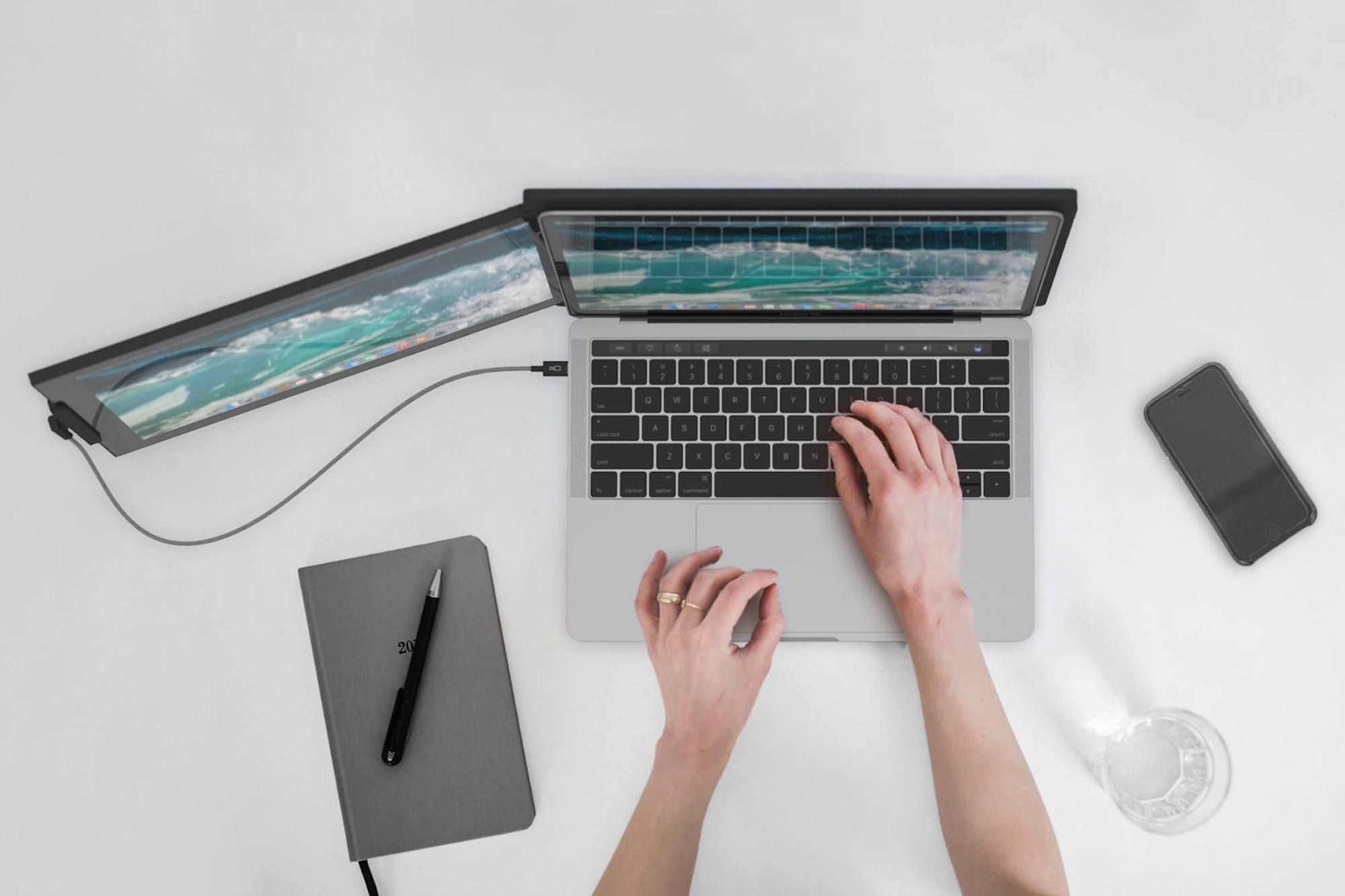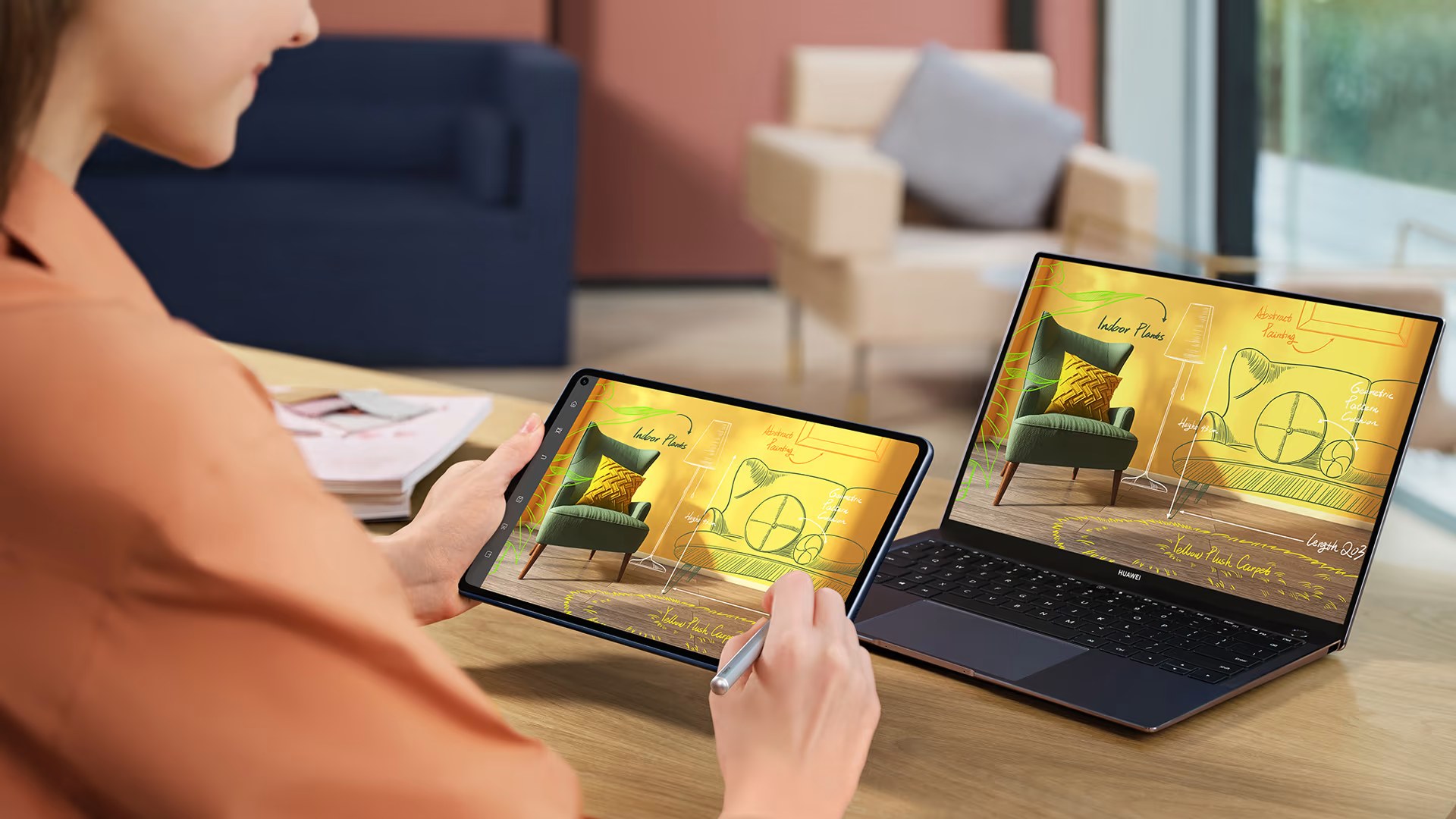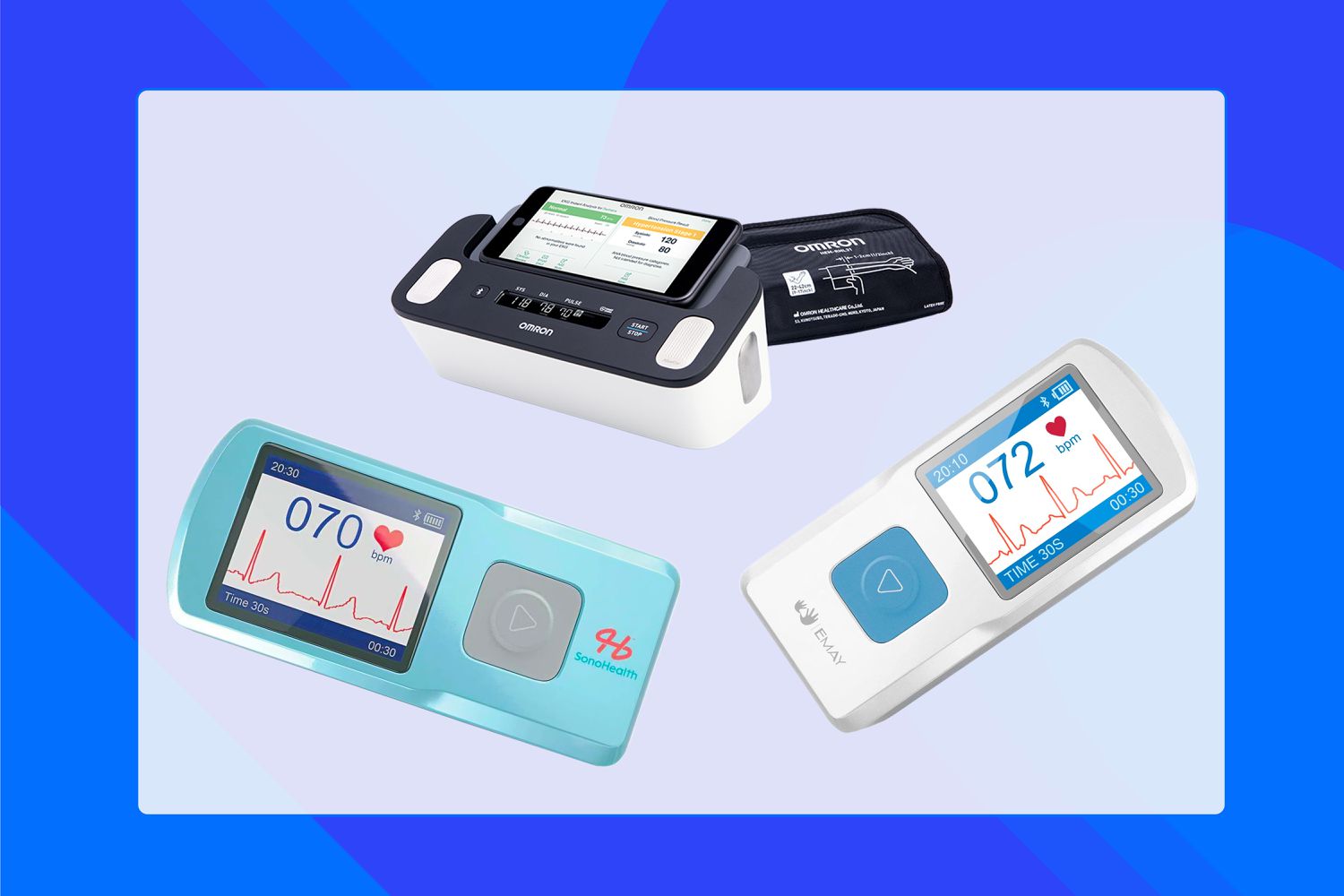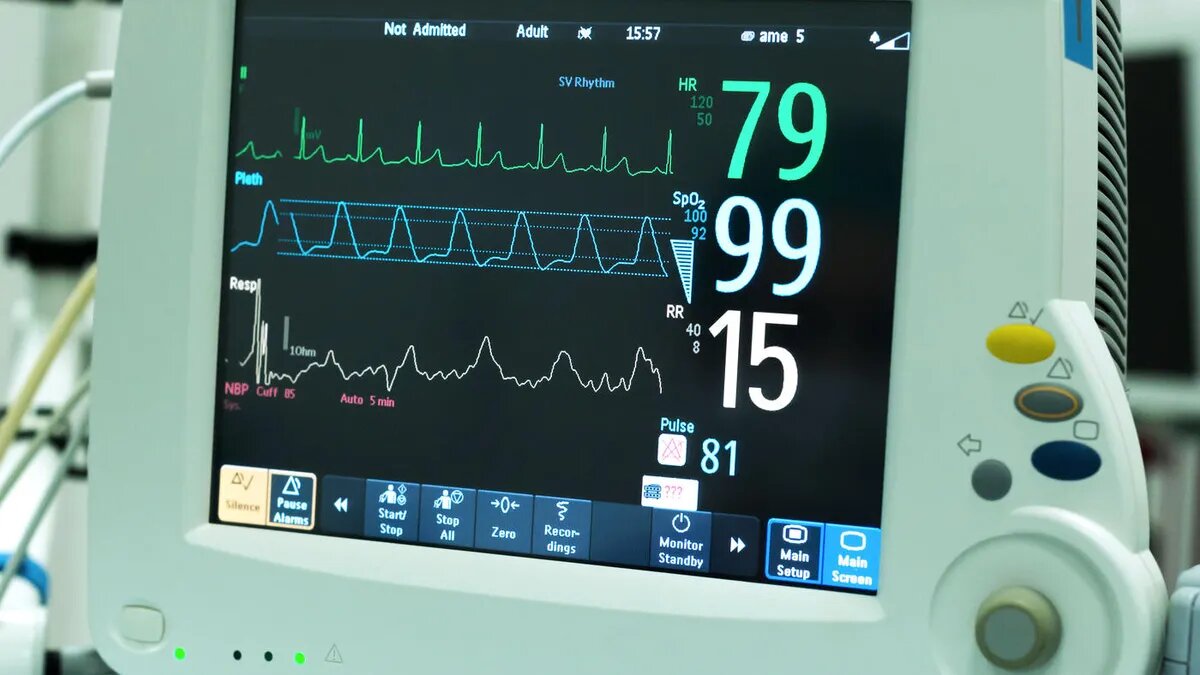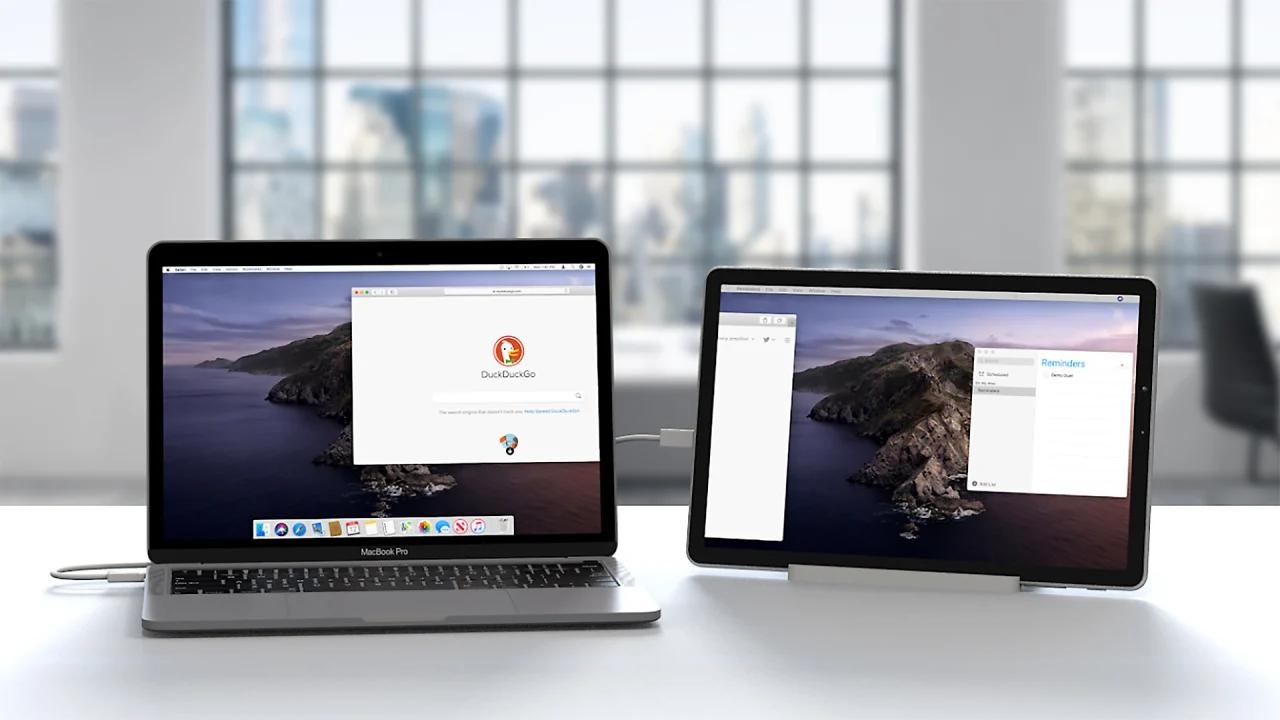Introduction
Welcome to the world of multitasking and productivity! Have you ever wished you had an extra monitor to help you work more efficiently? Well, if you own a tablet, you’re in luck! You can actually use your tablet as a second monitor, giving you the freedom to expand your screen real estate and boost your productivity to new heights.
The concept of using a tablet as a secondary display might sound complex at first, but fear not! With the right app and a few simple setup steps, you can transform your tablet into a valuable multitasking tool. Whether you’re a student, professional, or simply someone who wants to maximize their screen space, this guide will walk you through the process of setting up your tablet as a second monitor.
Before we dive into the nitty-gritty details, let’s explore the many benefits of using your tablet as a second monitor. By harnessing the power of this portable device, you’ll discover a whole new world of productivity and convenience.
Benefits of Using Your Tablet as a Second Monitor
Using your tablet as a second monitor can have a plethora of benefits that will enhance your workflow and overall computing experience. Here are some of the key advantages:
- Increased Screen Space: The most obvious benefit is the ability to expand your screen real estate. With a second monitor, you can have multiple applications and documents open simultaneously, reducing the need to constantly switch between windows. This is particularly useful when multitasking or working on complex projects that require multiple windows to be visible at once.
- Enhanced Productivity: More screen space translates to increased productivity. By using your tablet as a secondary display, you can have important information at your fingertips or reference materials open while working on your main screen. This allows for seamless access to data, eliminating the need to continuously minimize or switch between applications.
- Improved Focus and Organization: Having two screens also facilitates better organization and focus. You can dedicate one screen to your main task, such as writing a report or coding, while using the other screen for reference materials, communication apps, or monitoring your inbox. By separating your tasks across two screens, you can maintain better focus and reduce unnecessary distractions.
- Portability and Flexibility: One of the greatest advantages of using a tablet as a second monitor is its portability. Tablets are lightweight and easy to carry, which means you can extend your workspace wherever you go. This is especially beneficial for professionals who frequently work remotely or travel for business.
- Cost Efficiency: Another significant advantage of using your tablet as a second monitor is cost savings. Instead of purchasing an additional physical monitor, you can repurpose your existing tablet, eliminating the need for an additional expense. This makes it an affordable solution for those on a budget or looking for a more cost-effective way to extend their screen space.
With all these benefits in mind, it’s clear that using your tablet as a second monitor can greatly enhance your productivity, organization, and overall computing experience. Now that we know the advantages, let’s delve into the process of choosing the right app to transform your tablet into a second monitor.
Choosing the Right App
When it comes to using your tablet as a second monitor, the first step is to find the right app that seamlessly integrates your tablet with your computer. There are several apps available on the market, each with its own set of features and compatibility. Here are some key factors to consider when choosing the app:
- Compatibility: Ensure that the app you choose is compatible with both your tablet’s operating system and your computer’s operating system. Whether you are an iOS or Android user, there are apps available for both platforms.
- Ease of Use: Look for an app that offers a user-friendly interface and easy setup process. The app should provide clear instructions and minimal configuration steps to connect your tablet as a second monitor.
- Performance: Consider the performance of the app, as it should seamlessly extend your screen without any lag or delay. Look for apps that provide smooth and responsive screen mirroring.
- Additional Features: Some apps offer additional features that enhance the second monitor experience. These features may include touch functionality on the tablet for interacting with applications, the ability to rotate the tablet display, or even the option to use the tablet as a drawing tablet or extended keyboard.
- Reviews and Ratings: Before making a final decision, take the time to read reviews and ratings of the app from other users. This will give you insights into the app’s reliability, performance, and overall user satisfaction.
Popular apps that you can consider include Duet Display, iDisplay, Splashtop, and Air Display. These apps have received positive reviews and provide excellent compatibility and performance.
Once you have selected the app that meets your requirements, it’s time to move on to the next step: setting up your tablet as a second monitor. In the following section, we will explore the necessary steps to connect your tablet to your computer and configure the display settings.
Setting Up Your Tablet as a Second Monitor
Setting up your tablet as a second monitor involves a few simple steps to connect and configure the display settings. Let’s dive into the process:
- Download and Install the App: Start by downloading and installing the app you have chosen on both your tablet and your computer. Follow the installation instructions provided by the app.
- Connect Your Tablet to Your Computer: Depending on the app you are using, you can connect your tablet to your computer either via USB cable or using a wireless connection. Follow the app’s instructions to establish the connection between your devices.
- Launch the App on Both Devices: Open the app on both your tablet and your computer. Make sure the devices are on the same network, especially if you are using a wireless connection.
- Configure the Display Settings: Once the connection is established, you may need to configure the display settings. This can usually be done through the app on your computer. You can choose to extend your display, duplicate your desktop, or configure a custom display arrangement depending on your needs.
- Adjust Display Orientation and Resolution: In some cases, you may need to adjust the display orientation and resolution to match your preferences. Most apps provide options to rotate the tablet display and select the desired resolution for optimal viewing.
- Test Your Second Monitor Setup: After configuring the display settings, test your setup by moving windows and applications between your main monitor and the tablet. Ensure that you can interact with the tablet as you would with a regular monitor.
Remember to refer to the app’s documentation or support resources if you encounter any issues during the setup process. With your tablet connected as a second monitor, you can now explore different display arrangements and optimize the display for your specific needs.
In the next section, we will discuss how to connect your tablet to your computer and adjust display settings for optimal performance.
Connecting Your Tablet to Your Computer
Connecting your tablet to your computer is a crucial step in using it as a second monitor. The method of connection may vary depending on the app and the devices you are using. Let’s explore the common methods for connecting your tablet to your computer:
- USB Connection: Some apps allow you to connect your tablet to your computer using a USB cable. This method ensures a stable and reliable connection. Simply connect one end of the USB cable to your tablet and the other end to an available USB port on your computer. The app will guide you through the setup process to establish the connection.
- Wireless Connection: Many apps also offer the convenience of a wireless connection. To establish a wireless connection, both your tablet and computer need to be connected to the same Wi-Fi network. Launch the app on both devices and follow the app’s instructions to connect wirelessly. This method provides flexibility and freedom of movement.
- Additional Connectivity Options: Depending on your tablet and computer’s capabilities, you may have additional connectivity options such as Bluetooth or Wi-Fi Direct. These options can provide a hassle-free and direct connection. Check your tablet’s settings and the app’s documentation to see if these connectivity options are available.
Once the connection between your tablet and computer is established, you can proceed to the next step of configuring the display settings. This will allow you to customize how your tablet is used as a second monitor and optimize the display arrangement to suit your preferences.
In the following section, we will explore different display settings and arrangements to make the most out of your tablet as a second monitor.
Adjusting Display Settings
Once you have connected your tablet to your computer successfully, it’s time to adjust the display settings to optimize your dual monitor setup. Here are some key settings you can adjust:
- Display Orientation: Depending on how you physically position your tablet, you may need to adjust the display orientation. Most apps allow you to rotate the tablet display, so you can use it in landscape mode (horizontal) or portrait mode (vertical) according to your preference and workflow.
- Screen Resolution: Take some time to adjust the screen resolution of your tablet to match the desired sharpness and clarity. Higher resolutions will provide more detail, but they may require more system resources. Experiment with different resolutions and find the balance that works best for you.
- Monitor Arrangement: You can configure the arrangement of your tablet and computer monitors to suit your workspace and workflow. Common options include extending your desktop, duplicating your screen, or configuring a custom display arrangement. Explore different layouts to see what works best for you.
- Primary Monitor: Determine which monitor will be your primary display. The primary monitor is where your taskbar, icons, and desktop shortcuts will appear by default. Choose the monitor that you prefer to be your main workspace and set it as the primary display.
- Alignment and Placement: Position your tablet physically in a way that complements your workflow. Some people find it helpful to align the tablet with the main monitor, creating a seamless and cohesive workspace. Arrange the screens based on your ergonomic needs and personal preference.
Remember to save your display settings and apply the changes. It’s a good idea to test the layout and functionality by moving windows and applications between your main monitor and the tablet. This will help ensure smooth transitions and seamless interaction between the two screens.
Now that you have adjusted the display settings, you are ready to explore the numerous benefits of using your tablet as a second monitor. In the next section, we will discuss some tips for optimizing your tablet display for enhanced productivity.
Exploring Different Display Arrangements
When using your tablet as a second monitor, you have the flexibility to explore various display arrangements to suit your specific needs and preferences. Here are a few common display arrangements you can experiment with:
- Extended Desktop: This is the most popular display arrangement, where the tablet extends your computer’s desktop. It provides additional screen real estate, allowing you to drag windows and applications from your main monitor to the tablet screen. This setup is ideal for multitasking, as you can have multiple windows open and easily access information across both displays.
- Mirrored Display: Mirroring your computer’s display on the tablet can be useful in situations where you want to showcase content to others or provide a duplicate view of your work. Whatever you display on your computer monitor will be replicated on the tablet. Keep in mind that this arrangement doesn’t provide extra screen space but can be convenient in certain scenarios.
- Custom Display Arrangement: Some apps allow you to configure a unique display arrangement based on your specific requirements. For example, you can position the tablet above or below your main monitor, giving you vertical scrolling space. You can also arrange the screens side by side or in a combination that suits your workflow and visual preferences.
- Touch-Screen Interaction: If your tablet has touch-screen capabilities, you can take advantage of this feature to interact directly with applications and content on the tablet screen. This is especially useful for tasks like drawing or annotating documents, providing a more natural and intuitive way of working.
Feel free to try different display arrangements to find the one that maximizes your productivity and enhances your working experience. You may also discover that certain arrangements are better suited for specific tasks or projects. The beauty of using your tablet as a second monitor lies in its versatility and the ability to adapt the display to meet your unique needs.
In the next section, we will share some valuable tips for optimizing your tablet’s display and improving your overall productivity in a dual monitor setup.
Tips for Optimizing Your Tablet Display
Optimizing your tablet’s display as a second monitor can significantly improve your productivity and enhance your overall experience. Here are some valuable tips to help you make the most out of your tablet display:
- Adjust Brightness and Color Settings: Take some time to calibrate the brightness and color settings of your tablet’s display to ensure optimal viewing. Adjusting these settings can reduce eyestrain and make the screen more comfortable to work with for extended periods.
- Utilize Taskbar and Shortcut Placement: Customize your taskbar and arrange shortcuts on your tablet’s display for quick access to frequently used programs and files. This will save you time by eliminating the need to navigate back to your main monitor for every action.
- Organize Applications on Different Screens: Intentionally assign specific applications to either your tablet or main monitor based on frequency of use. This way, you can streamline your workflow and ensure that the most important applications are easily accessible on your tablet screen.
- Utilize Virtual Desktops: Take advantage of virtual desktops on your computer’s main monitor to further optimize your workspace. Create separate desktops for different tasks or projects, allowing you to switch between them seamlessly and keep your tablet dedicated as a second display.
- Create Custom Keyboard Shortcuts: Assign custom keyboard shortcuts to switch windows or move applications between your tablet and main monitor. This will help you navigate between the two screens more efficiently, saving you time and effort.
- Ensure Proper Cable Management: If you are using a USB connection between your tablet and computer, make sure to manage the cables neatly to avoid clutter and potential disturbances. Keeping your workspace organized can contribute to a more productive and focused environment.
Remember to experiment with these tips and tailor them to your specific needs and working style. Everyone’s preferences and workflows are different, so feel free to adjust these suggestions to suit your requirements.
By optimizing your tablet’s display and incorporating these tips, you can enhance your productivity, streamline your workflow, and maximize the benefits of using your tablet as a second monitor.
In the final section, we will discuss how a dual monitor setup can enhance your overall productivity.
Enhancing Productivity with Dual Monitors
A dual monitor setup, with your tablet as a second monitor, has the potential to substantially enhance your productivity. Here are some ways in which dual monitors can boost your efficiency:
- Multi-tasking Made Easy: With two screens, you can multitask seamlessly. You can have your main work on one screen while using the other for research, communication tools, or reference materials. This eliminates the need to switch back and forth between different applications or windows, saving you time and streamlining your workflow.
- Better Organization: Dual monitors allow you to keep your work environment organized. You can dedicate one screen for focused work while using the other for tools, notes, or communication channels. This helps reduce clutter and lets you keep relevant information readily accessible, boosting your overall efficiency.
- Improved Focus and Concentration: By separating your tasks across two screens, you can minimize distractions and maintain better focus. Having a dedicated space for work-related applications and another for non-work-related distractions can help you stay on track and accomplish tasks more efficiently.
- Increased Information Accessibility: With the extra screen space, you can have more applications and documents open simultaneously, making it easier to access the information you need. This is especially valuable for professions that require referencing multiple sources of information or comparing data side by side.
- Efficient Collaboration: Dual monitors also enhance collaboration, whether you’re working with colleagues or presenting information to clients or stakeholders. You can have meeting notes or presentation slides on one screen while engaging with your audience or collaborating on the other. This seamless interaction allows for more effective communication and collaboration.
- Flexibility and Versatility: Your tablet as a second monitor adds an extra layer of flexibility to your dual monitor setup. The portability of the tablet allows you to extend your workspace wherever you go, making it ideal for professionals who work remotely or travel frequently.
By harnessing the power of a dual monitor setup and optimizing your tablet as a second monitor, you can significantly enhance your productivity, streamline your workflow, and achieve more in less time.
Now that you have learned about the benefits, setup process, display arrangements, and tips for optimizing your tablet display, you are equipped with the knowledge to make the most out of your tablet as a second monitor.
Remember to explore different apps, experiment with settings, and tailor the setup to your specific needs and working style. With a little customization and creativity, you’ll unlock the full potential of your dual monitor setup and take your productivity to new heights.
Troubleshooting Common Issues
While setting up your tablet as a second monitor can provide numerous benefits, you may occasionally encounter some common issues. But fear not, as most of these problems can be resolved with a few simple troubleshooting steps. Let’s explore some of the potential issues and their solutions:
- Connection Issues: If you’re having trouble establishing a connection between your tablet and computer, ensure that both devices are on the same network (in case of a wireless connection) or that the USB cable is properly connected. Restarting both devices can also help resolve connectivity issues.
- App Compatibility: If you’re experiencing compatibility issues with the app you’re using, check for updates to the app and make sure it supports your tablet’s operating system and your computer’s operating system. Reinstalling the app or trying a different app may also resolve compatibility problems.
- Display Artifacts or Lag: If you notice visual issues such as artifacts or lag on the tablet’s display, try adjusting the screen resolution or refresh rate within the app’s settings. You can also ensure that your tablet and computer have sufficient processing power and memory to handle the dual monitor setup.
- Touchscreen Interaction Problems: If you encounter issues with touch functionality on your tablet display, ensure that the app you’re using supports touch input. You can also try disconnecting and reconnecting the tablet to reset the touch functionality. If the problem persists, check for any updates for the app or seek assistance from the app’s support resources.
- Inconsistent Display Performance: If you experience inconsistent performance between your tablet display and your computer monitor, check for any software updates for both your tablet and computer. It’s also recommended to close any unnecessary applications running in the background to free up system resources.
- Audio or Sound Issues: If you encounter sound problems while using your tablet as a second monitor, ensure that your audio settings are correctly configured on both your tablet and computer. Check the audio output settings of the app you’re using and verify that the volume is not muted or set too low.
If you’re still encountering issues after troubleshooting, consult the app’s documentation, support forums, or reach out to their customer support for further assistance. They will be able to provide more specific guidance tailored to the app and your particular setup.
By addressing these common issues and following the troubleshooting steps, you can overcome any obstacles and enjoy a smooth and productive dual monitor experience with your tablet.
Conclusion
In conclusion, using your tablet as a second monitor can greatly enhance your productivity and computing experience. With the right app and a few simple setup steps, you can expand your screen real estate, multitask effortlessly, and streamline your workflow.
We explored the benefits of using your tablet as a second monitor, including increased screen space, enhanced productivity, improved focus, portability, and cost efficiency. Choosing the right app is crucial, so consider factors like compatibility, ease of use, performance, and additional features when making your selection.
The process of setting up your tablet as a second monitor involves connecting your tablet to your computer, adjusting display settings, and exploring different display arrangements. Troubleshooting common issues, such as connection problems or display artifacts, can be easily resolved with a few simple steps.
By optimizing your tablet’s display, adjusting brightness and color settings, organizing applications, and utilizing shortcuts, you can fully optimize your dual monitor setup and boost your productivity. With a dual monitor configuration, you can multitask, stay organized, improve focus, access information easily, and collaborate effectively.
Remember to tailor the dual monitor setup to your specific needs, experiment with different arrangements, and explore additional productivity features in the app you choose. By customizing the setup to your workflow, you can reap the full benefits of using your tablet as a second monitor.
Now, armed with the knowledge and tips shared throughout this article, you’re ready to transform your tablet into a valuable multitasking tool. Embrace the power of dual monitors, maximize your productivity, and achieve new levels of efficiency in your work and everyday computing tasks.







